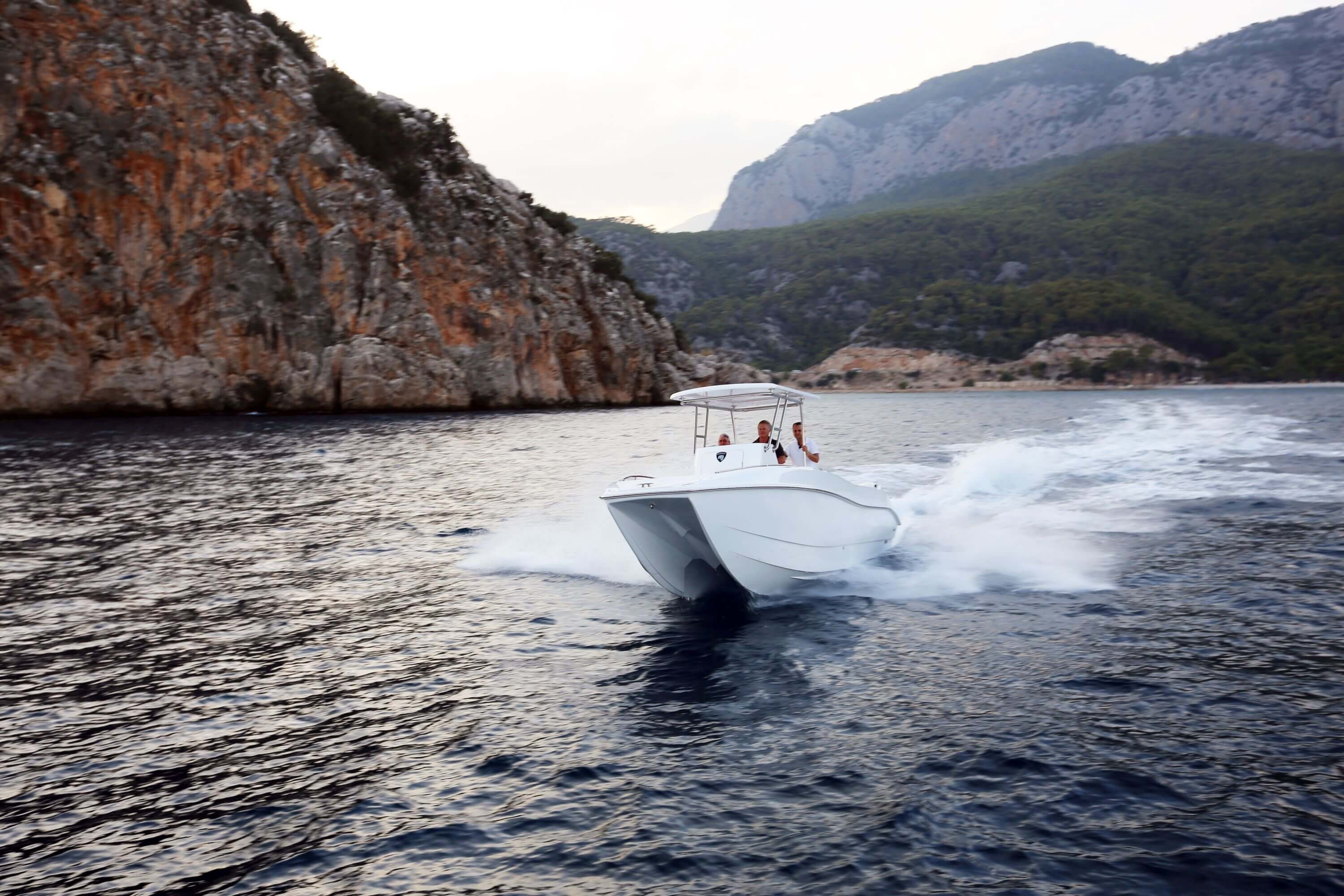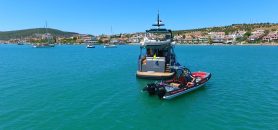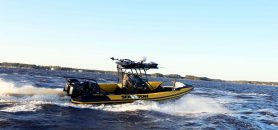The Science Behind Hydrofoils

Why Can’t Standard Boats Go As Fast As Cars?
Have you ever been curious as to why a powerful, recreational boat can’t make the same speed as a standard car? The answer lies in friction. A standard car only needs a bit more than one hundred horsepower to reach one hundred miles an hour, but getting a boat to do that same speed through the water takes a few hundred or more horsepower. Why is this the case? Primarily, it’s because water is about a whopping eight hundred times denser than air.
Imagine standing on a dock in ten knots of wind. That’s a relatively simple thing for any person to accomplish. Now imagine standing in a river in ten knots of current. Regardless of how strong you are, you’ll be swept away by the force of the current. This is due to the density of the water. The hull of a boat has to push through tons of dense water. On the other hand, a car can easily slip through the air with no problem.
Planing boats can go faster than standard displacement boats because they lift part of their hull out of the water as they race over their bow wave. Even so, there’s still a considerable amount of friction on the hull. If the hull could come out of the water, the friction will be eliminated, allowing the boat to go faster with the same amount of power.
The Science Behind Hydrofoils
Most people have a decent understanding of how an airplane can fly. As air flows over and under the wings (wings are also known as airfoils), this creates lift off. Once an aircraft gains enough speed, the lift generated by the wings allows the aircraft to rise above the earth.
If you were to mount a “wing” (or a hydrofoil) or two underneath a boat, all of the dense water could be put to a different use. The dense water can be used to push the boat’s hull directly out of the water. When this occurs, friction only acts on the small foil, as opposed to the entire hull. This is why with hydrofoils, a massive 130-foot sailboat can “fly” over the water at above 50 knots. Large powerboats have increased friction, as their propulsion systems must remain in the water, but even large powerboats can exceed 45 knots through the use of hydrofoils.
What’s more, is that speed is not the only benefit to using hydrofoils. Because the hull of the boat is not in the water, all the energy that would typically be pounding against the boat pass directly underneath it. This results in a ride that is smoother than anything even most seasoned boaters have experienced.
Experience The Best In Hydrofoil Technology With Hysucat
Due to hydrofoils implemented in the design of each vessel we make, Hysucat vessels require smaller drive engines. This results in vessels that are much more economical in terms of fuel consumption compared to other boat brands. Learn more about Hysucat hydrofoil vessels – give us a call at (252) 923-0430 or contact us online.





